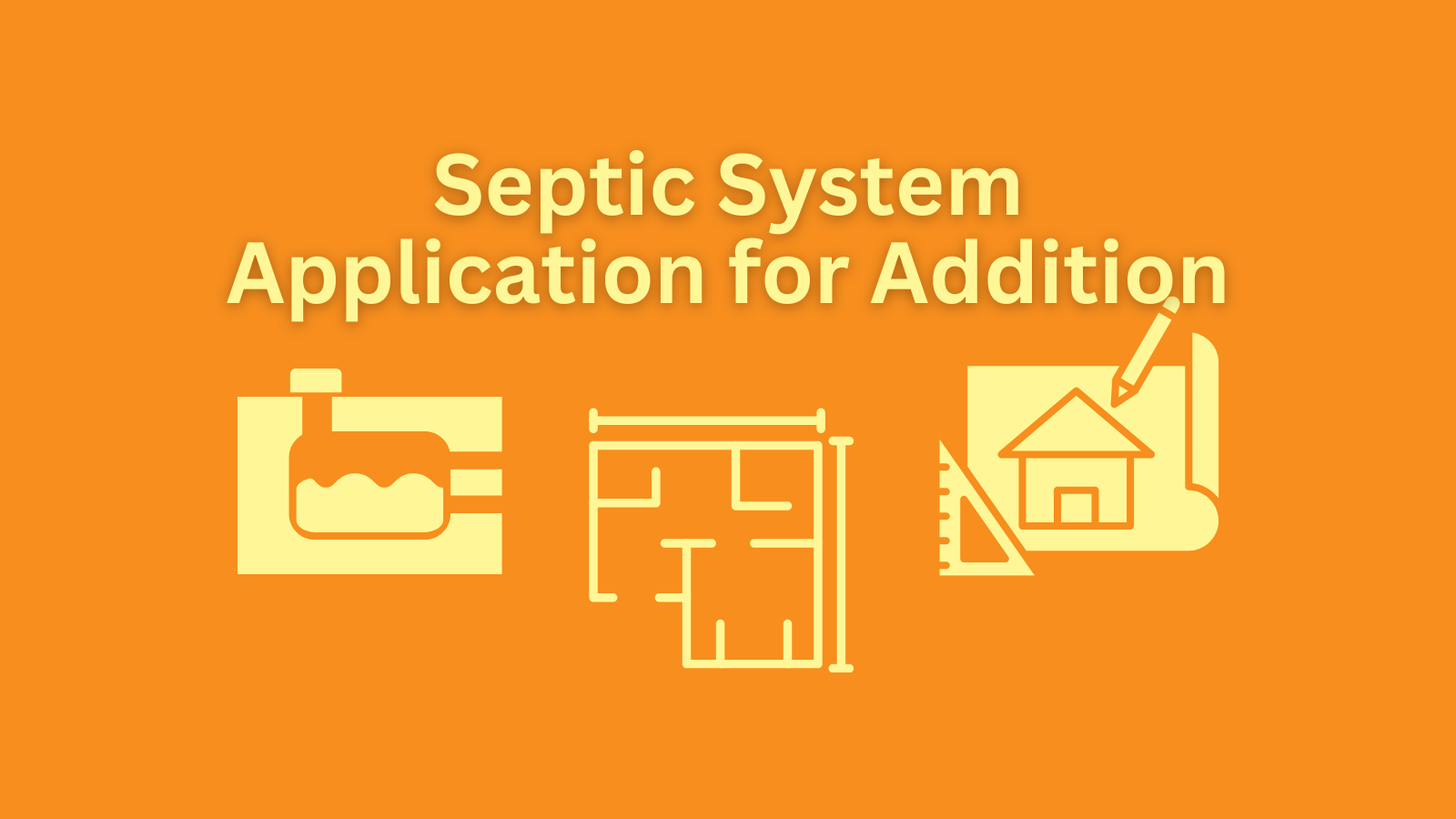It's a New Day in Public Health.
The Florida Department of Health works to protect, promote, and improve the health of all people in Florida through integrated state, county, and community efforts.
Existing Septic System Application for Addition
Environmental Health
- LeeEH@FLhealth.gov
- 239-690-2100
-
Fax
239-690-2101 -
TDD/TTY
711 -
2295 Victoria Ave. #206
Fort Myers, Florida 33901

When is an application for addition needed?
If there is an addition to the building area or the use of the building has changed, and it results in the increase in sewage flow, a change in sewage characteristics or other requirements of Chapter 62-6, F.A.C.
Applications may be sent via email to LeeEH@flhealth.gov.
To check the status of a septic permit application or inspection, use our new Septic Online Services page for quick access to the information.
What are the documents needed to apply for an addition?
The documents needed will depend on what kind of project the application is for.
Scenario 1The septic tank pumps out and the "Existing System and System Repair Evaluation Form" (DEP4015 page 4) is not required for:
- Residences if a bedroom is not being added and the addition will not encroach upon the existing system location.
- Commercial buildings addition will not increase estimated flow by more than 20%.
In any of these two cases, the fee for the addition is $60.00. Pay online by visiting MyFloridaEHPermit.com.
In scenario 1, the applicant must provide the following documents:
- An Application For Construction Permit completed in full, signed by the owner or the owner’s authorized representative, engineer, or licensed contractor.
- Under the building information section, enter the existing building information on the first line, and the proposed building information on the second line.
- A plat or plan of the lot which must be drawn to scale and shows the following features on or within 75 ft. of the property lines:
- Property dimensions and property lines and easements labeled in feet.
- The existing (and proposed) OSTDS system configuration and location on the property.
- All building locations.
- Potable and non-potable water lines within the existing (and proposed) drain field area.
- The general slope of the property.
- Any obstructed areas such as driveways, decks, sidewalks, swimming pools, etc.
- Any public or private wells.
- Any surface water bodies and storm-water systems in proximity to the septic tank system which restrict placement or relocation of the drain field system.
- Any public drinking water well within 200 ft. of the property lines.
- Any unusual site conditions such as drainage structures, roof drains or curtain drains.
- Existing and proposed floor plans drawn to scale or showing building area totals, all rooms labeled, and outside dimensions of each dwelling unit is required. Floor plans for nonresidential must include the plumbing plan.
If there is an addition to the building area or the use of the building has changed, and it results in the increase in sewage flow, a change in sewage characteristics or other requirements of Chapter 62-6, F.A.C. This may require the system to be upgraded or brought into full compliance with current rule requirements.
The application fee for an existing system needing a modification for addition is $355.00. Pay online by visiting MyFloridaEHPermit.com.
Applications may be sent via email to LeeEH@FLhealth.gov.
In scenario 2, the applicant must provide the following documents:
- An Application For Construction Permit completed in full, signed by the owner or the owner’s authorized representative, engineer, or licensed contractor.
- Under the building information section, enter the existing building information on the first line, and the proposed building information on the second line. Include the “Existing System and System Repair Evaluation Form”.
- Under the building information section, enter the existing building information on the first line, and the proposed building information on the second line. Include the “Existing System and System Repair Evaluation Form”.
- A plat or plan of the lot which must be drawn to scale and shows the following features on or within 75 ft. of the property lines:
- Property dimensions and property lines and easements labeled in feet.
- The existing (and proposed) OSTDS system configuration and location on the property.
- All building locations.
- Potable and non-potable water lines within the existing (and proposed) drain field area.
- The general slope of the property.
- Any obstructed areas such as driveways, decks, sidewalks, swimming pools, etc.
- Any public or private wells.
- Any surface water bodies and storm-water systems in proximity to the septic tank system which restrict placement or relocation of the drain field system.
- Any public drinking water well within 200 ft. of the property lines.
- Any unusual site conditions such as drainage structures, roof drains or curtain
- Existing and proposed floor plans drawn to scale or showing building area totals, all rooms labeled, and outside dimensions of each dwelling unit is required. Floor plans for nonresidential must include the plumbing plan.
- If the system must be upgraded and a tidal surface water body exists on or within 75 ft. of the property, a Mean High-Water Line must be determined and recorded on a submitted survey by a professional surveyor.
- Provide the least 12 months of water usage for residential and 18 months for commercial unless building is served by an unmetered well.
- Below shows cases which require Engineer Design including all plans and forms submitted by the engineer shall be dated, signed, and sealed for.
- Systems serving establishments with proposed domestic sewage flow rates of 2,500 or more gallons per day.
- Systems serving establishments with proposed commercial sewage flow rates of 1,000 or more gallons per day.
- Systems where the total required drain field area is 1,500 square feet or greater.
- The applicant proposes to split the flow from any residence or establishment in a method other than that provided for by rule.
- The repair or modification of an engineer-designed system that meets these criteria for requiring an engineered design and that alters the original engineered design.
- All performance-based treatment systems.
- All innovative systems.
- All sites where the seasonal high-water table has or will be altered by physical or mechanical means.
- All sites requiring engineer designs as a condition of a variance or waiver approval.
- All drip irrigation systems.
- All new septic applications for unincorporated Lee County.
- Low pressure dosed drain fields when not designed by a master contractor.




Connect with DOH